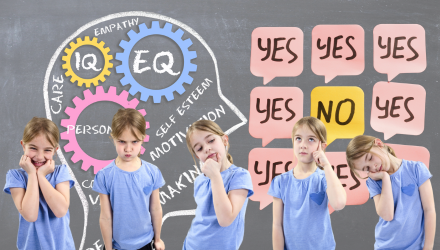In the intricate shade of emotional intelligence, tone-mindfulness is the foundation upon which other angles are assembled. Emotional intelligence, frequently docked as EQ, isn’t simply an abstract conception but a practical frame for understanding and managing one’s feelings, as well as effectively navigating interpersonal connections.
Among its five core factors
tone-mindfulness,
tone-regulation,
provocation,
empathy, and
social chops; tone-mindfulness stands out as the abecedarian skill that influences and enhances the others.
Understanding tone- mindfulness: Tone-mindfulness is the capability to fete and understand one’s own feelings, studies, and values, and how they impact geste.
It involves a deep, reflective mindfulness of one’s strengths and sins, provocations, and the emotional responses one gests in different situations.
This understanding forms the bedrock for particular growth and effective emotional operation.
Tone-mindfulness is further than just an intellectual exercise; it requires a nuanced sapience into how one’s feelings shape their relations and opinions.
For case, feting a tendency toward desirousness in stressful situations can prompt an individual to borrow strategies for managing this emotion before it impacts their geste or connections.
What’s the connection between tone-mindfulness and emotional intelligence?
The Link Between Self- Awareness and Emotional Intelligence
1. Enhanced Emotional Regulation
Tone-mindfulness is pivotal for emotional regulation —the capability to manage one’s feelings in a formative manner. By understanding one’s emotional triggers and responses, individualities can develop strategies to handle challenging situations more effectively.
For illustration, a tone- apprehensive person who recognizes signs of frustration can use ways similar as deep breathing or cognitive reframing to maintain countenance, thereby precluding negative responses that could harm connections.
2. bettered Decision- Making
Decision-timber is profoundly affected by tone- mindfulness. An existent who’s apprehensive of their emotional impulses and inclinations is better equipped to make opinions grounded on objective criteria rather than emotional impulses. Tone-mindfulness allows for a more balanced evaluation of options, reducing the liability of remorse and enhancing the quality of choices made.
3. Greater Empathy
Empathy, the capability to understand and partake the passions of others, is nearly linked to tone-mindfulness.
When individualities are attuned to their own emotional gests, they’re more able of feting and relating to the feelings of others. This compassionate connection fosters stronger interpersonal connections and improves communication, as individualities are more suitable to respond to others’ needs and concerns with perceptivity and understanding.
4. Increased provocation
tone-mindfulness also plays a vital part in provocation. By understanding their core values, heartstrings, and purpose, individualities can align their pretensions and sweats with what authentically inspires and drives them.
This alignment leads to increased perseverance and adaptability, as provocation deduced from a deep sense of tone-mindfulness is more sustainable and fulfilling.
5. Enhanced Interpersonal connections
Interpersonal connections are significantly told by tone-mindfulness. Being apprehensive of one’s own emotional impact on others can lead to further thoughtful and regardful relations.
Tone-apprehensive individualities are better equipped to manage conflicts, communicate effectively, and make stronger, more authentic connections by being attuned to both their own and others’ emotional requirements.
Developing tone- mindfulness: Cultivating tone-mindfulness is a nonstop and evolving process. Then are some practical strategies to enhance this pivotal element of emotional intelligence
1. Regular tone- Reflection
Engage in regular tone- reflection to assess your emotional responses, actions, and provocations. Journaling or awareness practices can be precious tools for this introspective process, furnishing sapience into patterns and areas for growth.
2. Seek Feedback
Solicit formative feedback from others to gain a different perspective on your geste and impact. Feedback from trusted associates, musketeers, or instructors can reveal eyeless spots and help upgrade your tone-mindfulness.
3. Exercise awareness
awareness ways, similar as contemplation and deep breathing exercises, can help you stay present and attuned to your feelings. This practice fosters a lesser understanding of how feelings impact studies and conduct.
4. Set particular pretensions
Identify specific areas for enhancement and set pretensions for particular development. By fastening on these areas, you can track progress and make informed adaptations to enhance tone-mindfulness and emotional intelligence.
5. Engage in Emotional knowledge Training
Consider sharing in shops or training programs concentrated on emotional intelligence and tone-mindfulness. These coffers can give structured guidance and tools for heightening your understanding of yourself and your emotional geography.
Conclusion: Tone-mindfulness isn’t just a element of emotional intelligence but the foundation upon which effective emotional operation and interpersonal chops are erected.
By fostering a deep understanding of one’s own feelings, provocations, and actions, individualities can navigate life’s challenges with lesser ease and authenticity.
Developing tone-mindfulness enhances emotional regulation, decision-timber, empathy, provocation, and interpersonal connections, leading to a more balanced and fulfilling life.
In substance, the trip toward learning emotional intelligence begins with the profound and transformative practice of tone-mindfulness.

